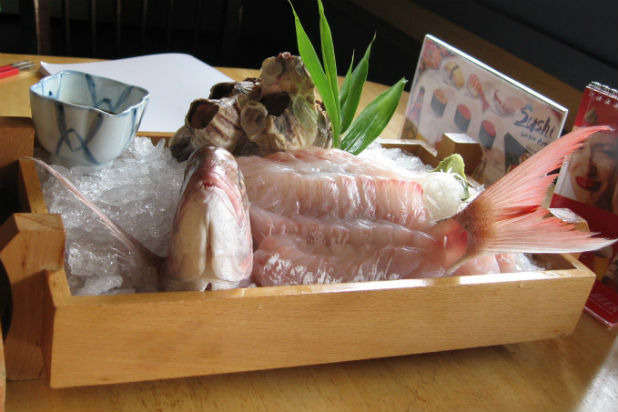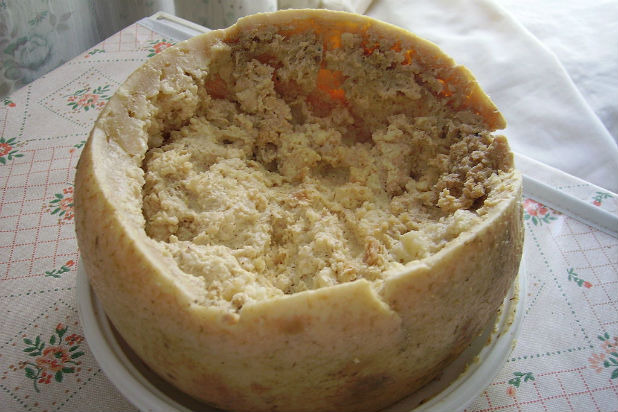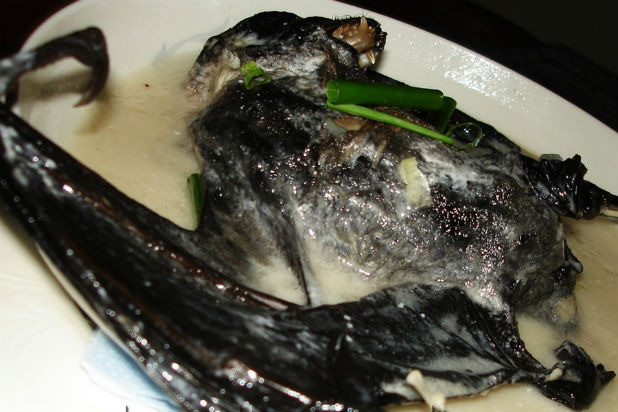8 Animals That Are Eaten Alive Around The World (Slideshow)
Sea urchins, those black spiny balls you find on the ocean floor, actually contain a living creature, or at least its gonads. If you have the right tools, or are tenacious enough and have a pair of scissors, then you can crack open the spiky shell, scoop the orange creature out, and eat it alive. It's eaten mostly in coastal areas and particularly around the Mediterranean – it's called Ricci di Mare in Italy, uni in Japan, and erizos in Chile.
7. Breathing Fish
In parts of Japan you can have your sashimi while it's still alive, and with a beating heart. Ikizukuri is a filleted fish that's served while the fish is still gasping for air. The mangled body is arranged on a plate with the live head used as decoration. For ethical reasons the dish is banned in many countries.
6. Squirming Octopus
The Korean delicacy sannakji is a dish made from a small octopus that's chopped up and served to diners while it's still alive and squirming — patrons enjoy feeling the suckers (or suction cups on the octopus's arms) sticking to their tongues and throats while they chew.
5. Wormy Cheese
Casu Marzu is a gourmet Italian sheep cheese packed full of maggots and worms that's known for its soft and slightly acidic texture. It's made when a fly lays its eggs on the cheese, the eggs hatch, and the larvae (or maggots) burrow into the cheese. The resulting cheesy-effect is both squishy-soft and tart (this happens when the bugs eat the fats in the cheese and excrete the remains). The aim is to eat the cheese with maggots intact and preferably while they're still alive, or you'll just be eating dead maggots, which is more than a little icky.
4. Chilled Ants
Copenhagen-based restaurant Noma apparently thinks it's a good idea to put ants in a salad — their patrons seem to agree and are willing fork out $300 for a plate. The ants, dished up with a dollop of crème fraîche, are offered as a crunchy, gluten-free alternative to croutons and taste like ginger, cilantro, and lemongrass. And don't worry too much about them escaping your plate, they are chilled before serving so they're a little groggy and move slower.
3. Jumping Shrimp
Odori Ebi and Drunken Shrimp are dishes from Japan and China respectively, and both involve eating the sea-animal while parts of it are still alive. Odori Ebi removes the shell of baby shrimp and deep fries the body — it's traditionally eaten while the legs and antenna are still moving, but if this is a little too disconcerting you can try dipping it in some sake first, the alcohol intoxicates it long enough for you to chew it to death.
2. Frog Sashimi
This dish takes eating frog legs to an entirely new level. In some eastern countries, mainly China, Vietnam and Japan, you can eat live frogs served up filleted with their hearts still beating (and occasionally while their limbs are still moving). The dish is a delicacy and uses special bullfrogs raised for cooking. There are many ways to make the dish but this is usually how it's prepared: the frogs are still alive when you order them, then they're sliced open on a plate and disemboweled while alive. Certain parts are removed and boiled in a broth, the rest is sliced as sashimi and served on the frog. For the record, this is not a meal for the squeamish. It's all done in front of you while you're waiting for your meal and you eat the frog complete with beating heart and flailing limbs. The dish has been called out for animal cruelty and it is banned in many countries.
1. Fruit Bat Soup
On the tiny island of Guam, in the western Pacific Ocean, locals like to indulge in a little "kå'kå'du fanihidu fanihi", a meat dish made with a fox or fruit bat in a coconut milk soup. The still-living bat is nabbed from the wild, rinsed off, and popped into a boiling vat of water, wings, fur, and head intact, and boiled alive before being served up with a dash of coconut milk and vegetables (if you're lucky). You're meant to eat everything except the bones and teeth. While the bat is technically dead (or in the final throes of death) when served, the abundant parasites and bacteria it contains are certainly not. There are some serious diseases that can be passed along to humans from this dish so eat it with care, if you choose to eat it at all!







